
First off, I apologize to anyone who wondered what happened to me for the past 2 weeks. I have been working on a presentation that I did on Monday for the Scarab Society, and it has a been rather an all consuming task. I just shared it as a blog on this site under the title ‘Evolution of a recreational naturalist’.
Clogmia albipunctata is a fly in the subfamily Psychodinae (moth flies) that goes by the common names bathroom moth fly, drain fly, filter fly, or sewer fly, amongst others. The Psychodinae are members of the suborder Nematocera (long-horned flies) which are distinguished by having unusually long (for flies) antenna that have many segments. Members of the family Psychodidae are called moth flies because they have furry bodies and long, hairlike scales along the wing veins.
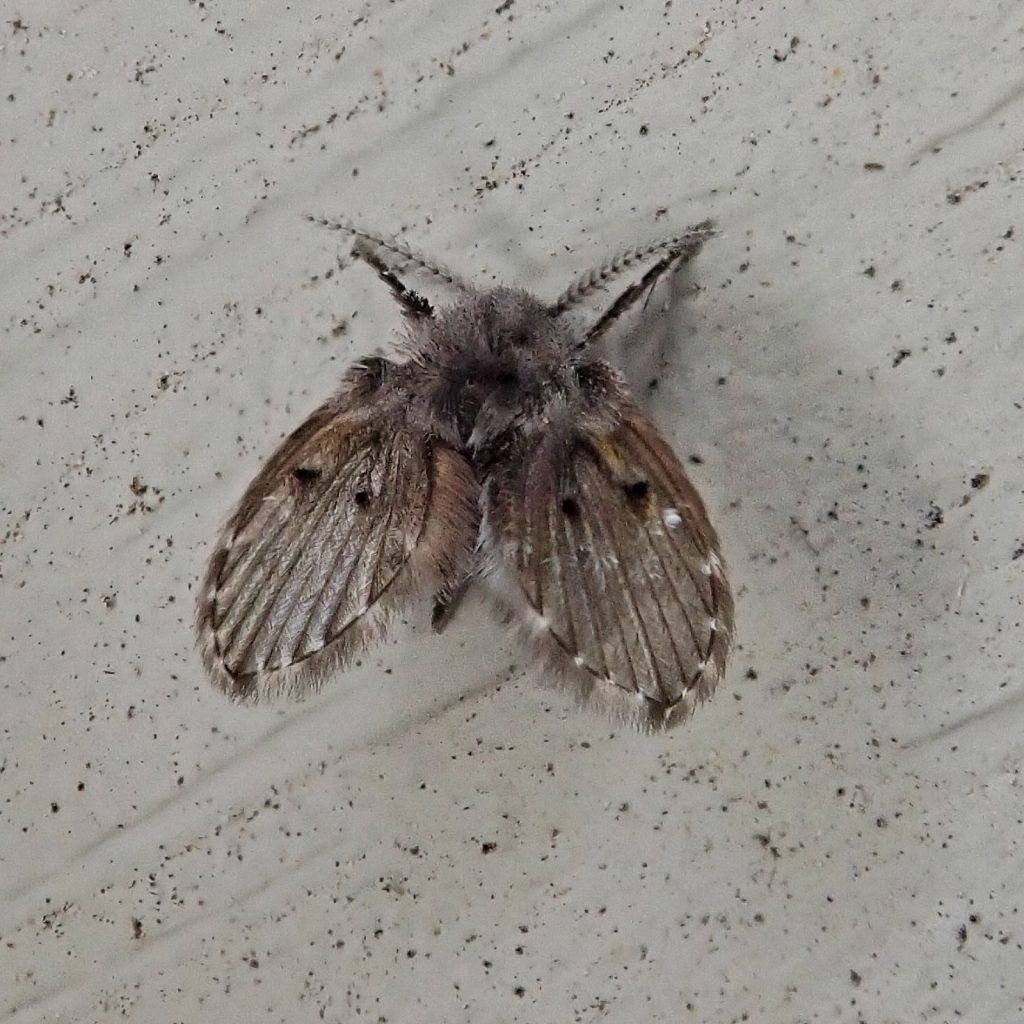
Clogmia albipunctata are very weak flyers, and seldom range far from their birthplace, unless aided by wind. They are actually rather cute little bugs, with those long antennae, furry bodies, and nice wing pattern, and I’m always happy to see them. The photos in this post (except the extreme closeups) were taken when I finally remembered my camera on a day that I visited a house where I often find some in the shade, perched on the exterior walls, on cool, late summer mornings.
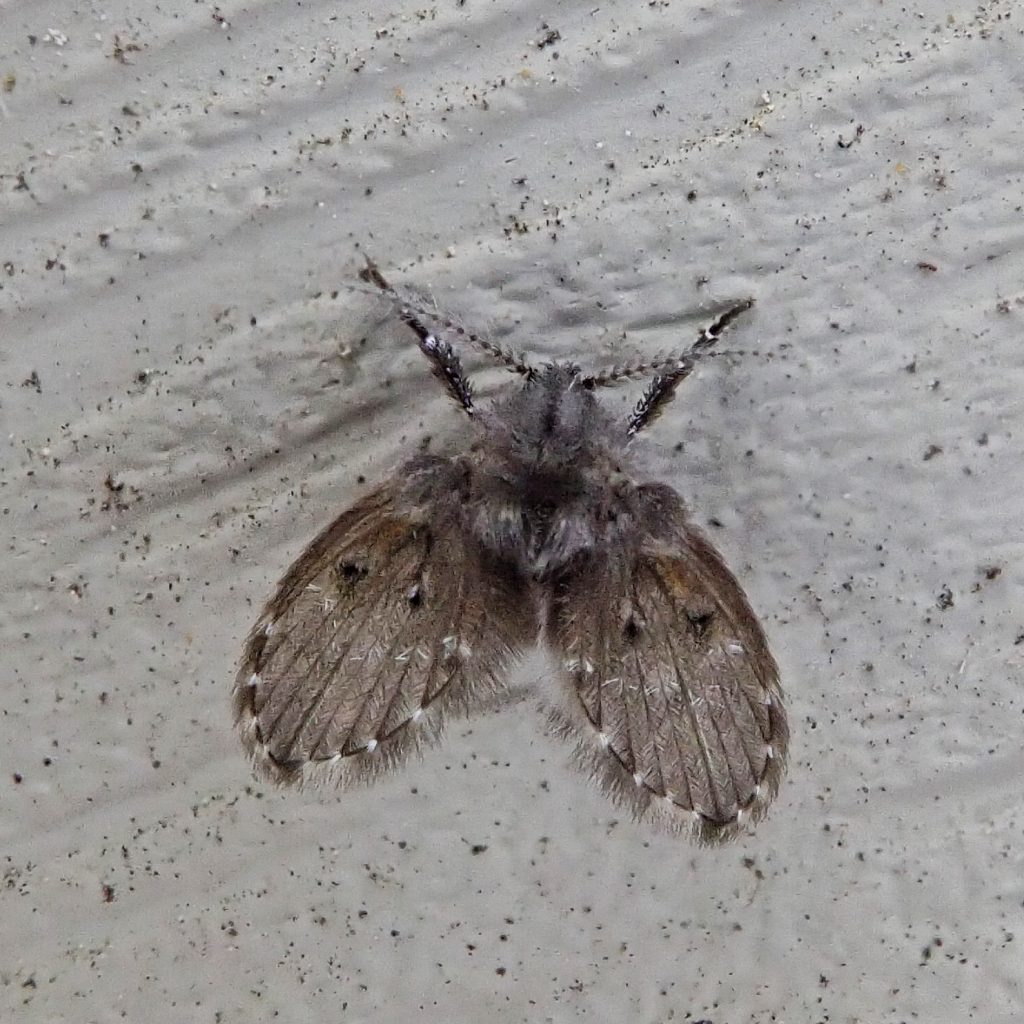
These little flies are frequently found around open drains and sewer areas, often in bathrooms and kitchens, because the larvae feed on wet, decaying organic material, but they are mostly harmless, though some consider them a nuisance pest. Eradicating them is difficult because the long hairs of both larvae and adults make them resistant to both bleach and to boiling water. They have been implicated in a few cases of myiasis, where a larvae is actually found to be feeding on human mucous membranes in the gut or sinuses. It must be said though that those few cases involved extremely poor hygiene, and the larvae are not known to crawl into human orifices. And the larvae are highly beneficial in the wastewater treatment process.
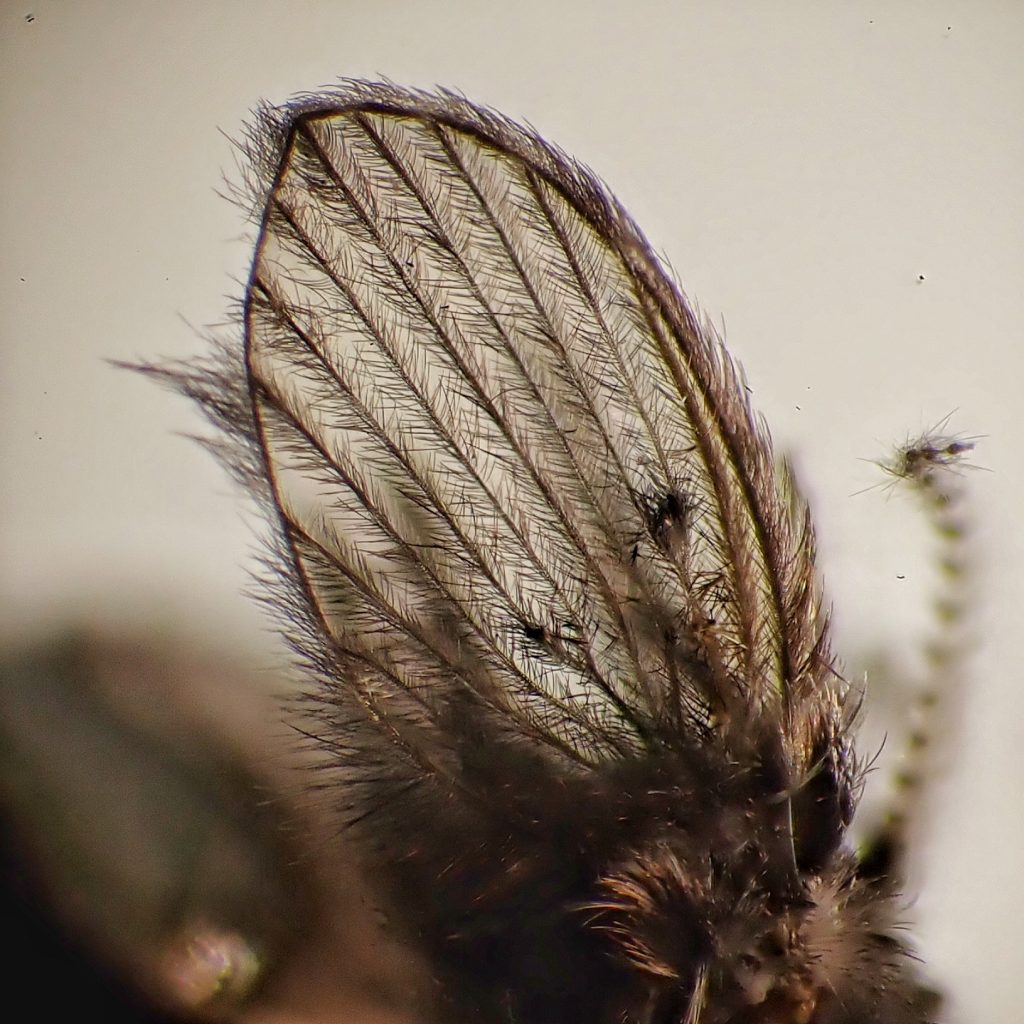
Description-Small (3-5mm) fly with long hairy antenna, furry grey body, and oval, brown wings with fringed margins, white spots along the margin and in the field, two darker spots near the base, and often with a brownish yellow streak through the anterior dark spot.
Similar species-This is the only species of Clogmia in our region; Psychoda spp. are smaller and have light colored wings without white markings; Maruina spp. have narrower wings.
Habitat-Larvae live in wet places with decaying organic material, and are primarily found in drain pipes, sewers, and waste treatment areas, but are also found in tree cavities, stagnant ponds, very wet compost, and around wet garbage; adults often found in kitchens and bathrooms.
Range-Naive to the tropics, now nearly cosmopolitan where there are human dwellings, since it is a synanthrope.
Eats-Larva eat ‘slime’, the gooey layer of decaying organic matter; adults consume nectar and other liquid carbohydrates.
Eaten by-Insectivores of all classes
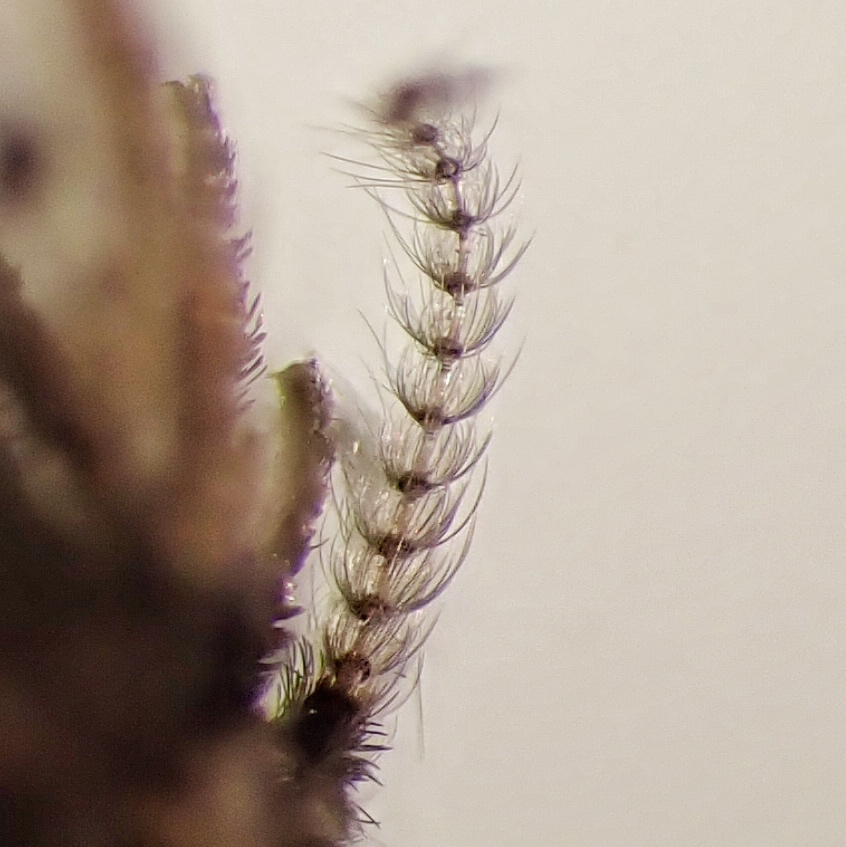
Life cycle-30-100 eggs are laid on or near decaying organic material, often near drains, although any damp, decomposing material will work; larvae hatch in 2 days, and the larval period lasts 1-3 weeks and involves 4 instars; pupation takes 5 days, and adults live for up to 3 weeks if there is adequate food.
Adults active-June through November
Etymology of names-I cannot ascertain what the generic epithet Clogmia references, though I’m pretty sure it is not that they like clogged drains, although that is how I remember it. The specific epithet albipunctata is from the Latin for ‘white spotted’, and refers to the white spots on the wings and wing margins.
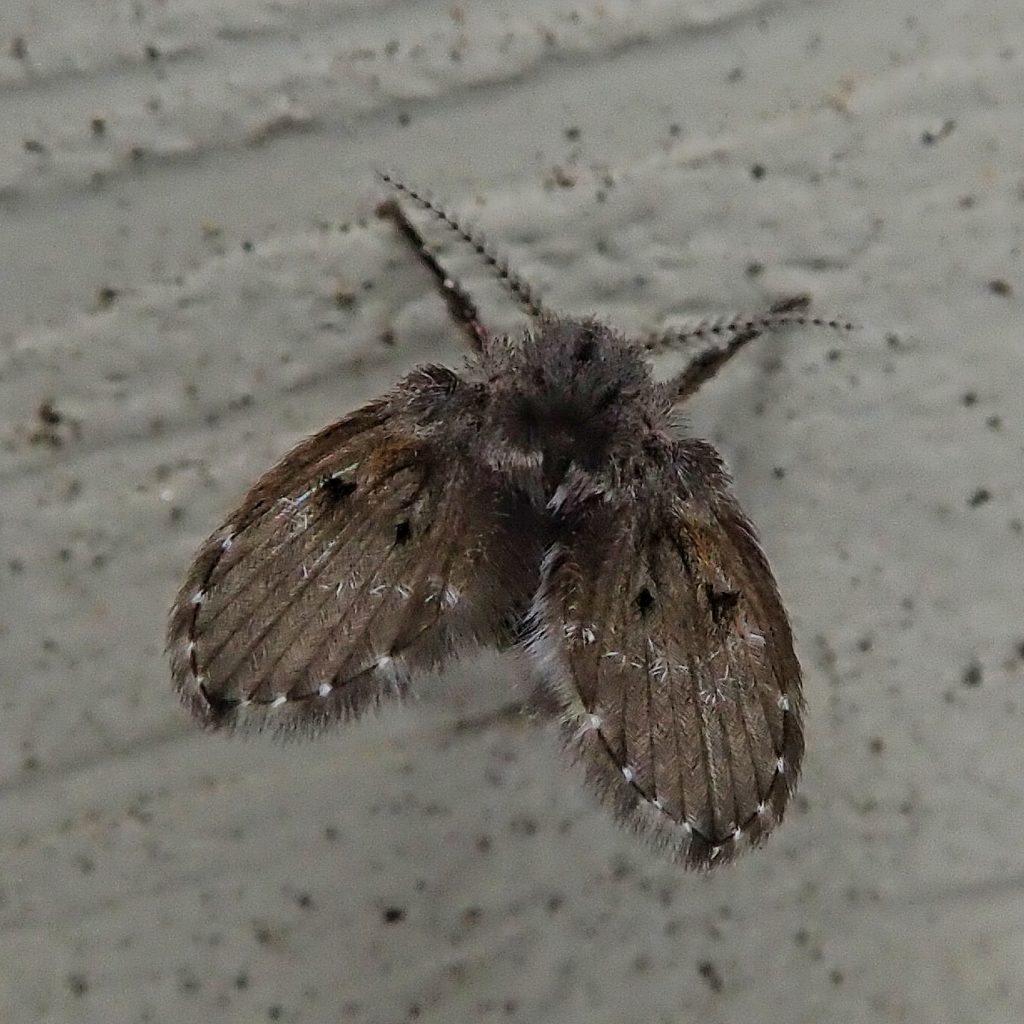
https://bugguide.net/node/view/250015
https://www.inaturalist.org/taxa/258813-Clogmia-albipunctata
https://museumpests.net/wp-content/uploads/2015/03/Fact-Sheet-Drain-Fly.pdf
https://www.sciencedirect.com/science/article/pii/S1876034119302588
https://sites.duke.edu/dukeinsects/insect-orders/diptera/clogmia-albipunctata

Very interesting profile! & an amazing picture of an antenna! Thank you ☺️
Another beautiful creature we share the planet with.
Yes it is!
Very interesting! Thanks!